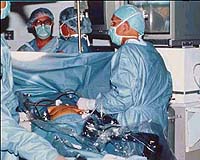 |
Oslo, Norway (SPX) Jan 04, 2011 Could a plant "intervention" improve the well-being of patients in a difficult rehab process? Scientists from the Norwegian University of Life Sciences and Sweden's Uppsala University investigated this question in a recent study of 436 coronary and pulmonary patients at a Norwegian rehabilitation center. The results were published in HortScience. Ruth Kjaersti Raanaas, Grete Grindal Patil, and Terry Hartig studied the effects of an indoor plant intervention during a 2-year study conducted at the Roros Rehabilitation Center. The experiment showed that patients' overall physical and mental health improved during the program, but the presence of new plants did not increase the degree of improvement. One encouraging finding: pulmonary patients in the "plant intervention group" reported a larger increase in well-being during their rehabilitation program more often than lung patients from the "no-plant" control group. For the intervention, 28 new plants were placed in common areas at the rehab center, which had previously contained only a few poorly maintained plants. Aside from the introduction of the new plants and removal of some older plants, no other changes were made to the interior decoration during the study period. Coronary and pulmonary patients completed self-assessments upon arrival at the center, after 2 weeks, and at the end of a 4-week program. The research project, designed to investigate whether the addition of indoor plants in the common areas would improve self-reported physical and mental health, subjective well-being, and emotions among patients over the course of their rehabilitation program, was funded by the Norwegian Foundation for Health and Rehabilitation, the Norwegian Gardener's Union, the Bank of Roros, Tropisk Design, and Primaflor. According to Raanaas, the team found no "significant direct effects" of the plant intervention on change in either of the self-reported health outcomes. "The results did, however indicate that the plant intervention affected the degree of change in subjective well-being, although this effect was further contingent on patient group." The team postulated that the study outcomes may have been limited by the rehab center's well-designed interior and location in a scenic mountain area, but noted that these features did not negate the potential for indoor plants to contribute to patient well-being. "One reason why the plant intervention did not influence the health outcomes in the present study may be that the participants were mobile and were exposed to a variety of treatments and activities at the center", the researchers concluded.
Share This Article With Planet Earth
Related Links American Society for Horticultural Science Hospital and Medical News at InternDaily.com
 Doctors Should Be Required To Disclose Sleep Deprived Status
Doctors Should Be Required To Disclose Sleep Deprived StatusWashington DC (SPX) Jan 04, 2011 While regulations have been put in place to restrict the work hours of doctors in training, no such regulations exist for fully trained physicians. An editorial in the New England Journal of Medicine argues that sleep-deprived physicians should not be permitted to proceed with an elective surgery without a patient's informed, written consent. According to the authors, "This approach would ... read more |
|
| The content herein, unless otherwise known to be public domain, are Copyright 1995-2010 - SpaceDaily. AFP and UPI Wire Stories are copyright Agence France-Presse and United Press International. ESA Portal Reports are copyright European Space Agency. All NASA sourced material is public domain. Additional copyrights may apply in whole or part to other bona fide parties. Advertising does not imply endorsement,agreement or approval of any opinions, statements or information provided by SpaceDaily on any Web page published or hosted by SpaceDaily. Privacy Statement |